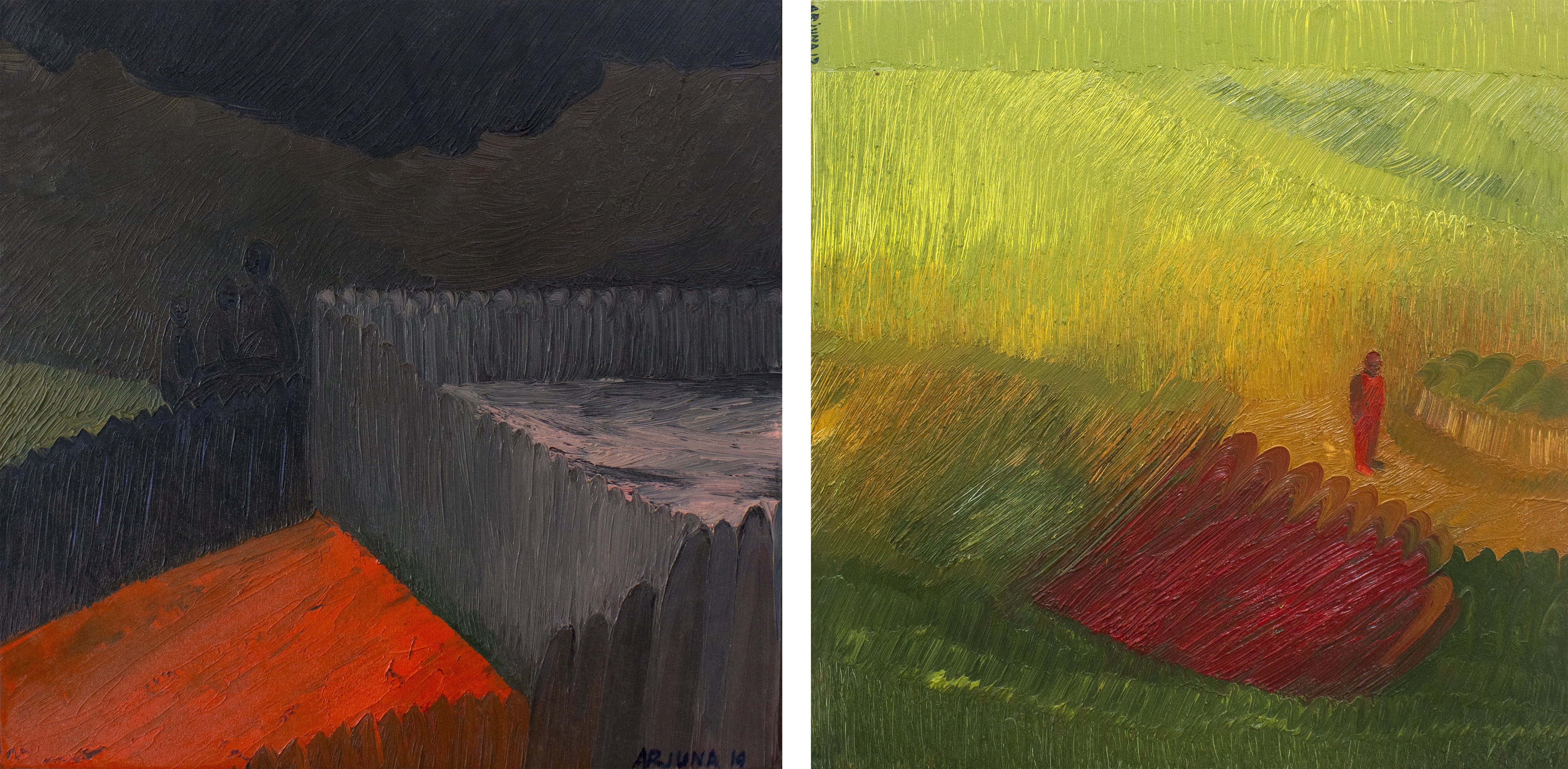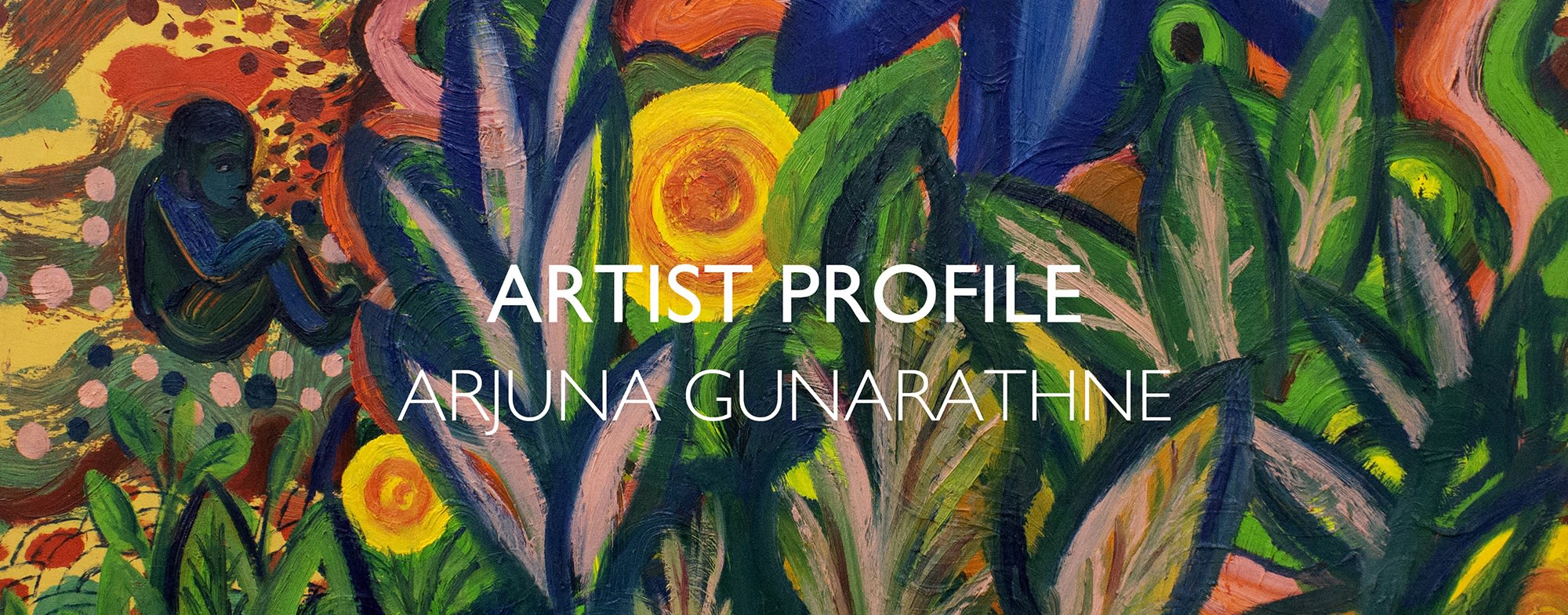
|
Arjuna Gunarathne is a visual artist from Sri Lanka, currently based in London, UK. Featured in The A-Z of Conflict (published by Raking Leaves in 2019), he has presented solo exhibitions in Sri Lanka and Pakistan as well as group exhibitions including the Museum of Ethnology, Austria and the fourth Dhaka Art Summit, Bangladesh. His work belongs to the Royal Art Collection, UK.
Arjuna's exhibition, 'Within Boundaries' is currently on show at Saskia Fernando Gallery until 13.12.22.
|
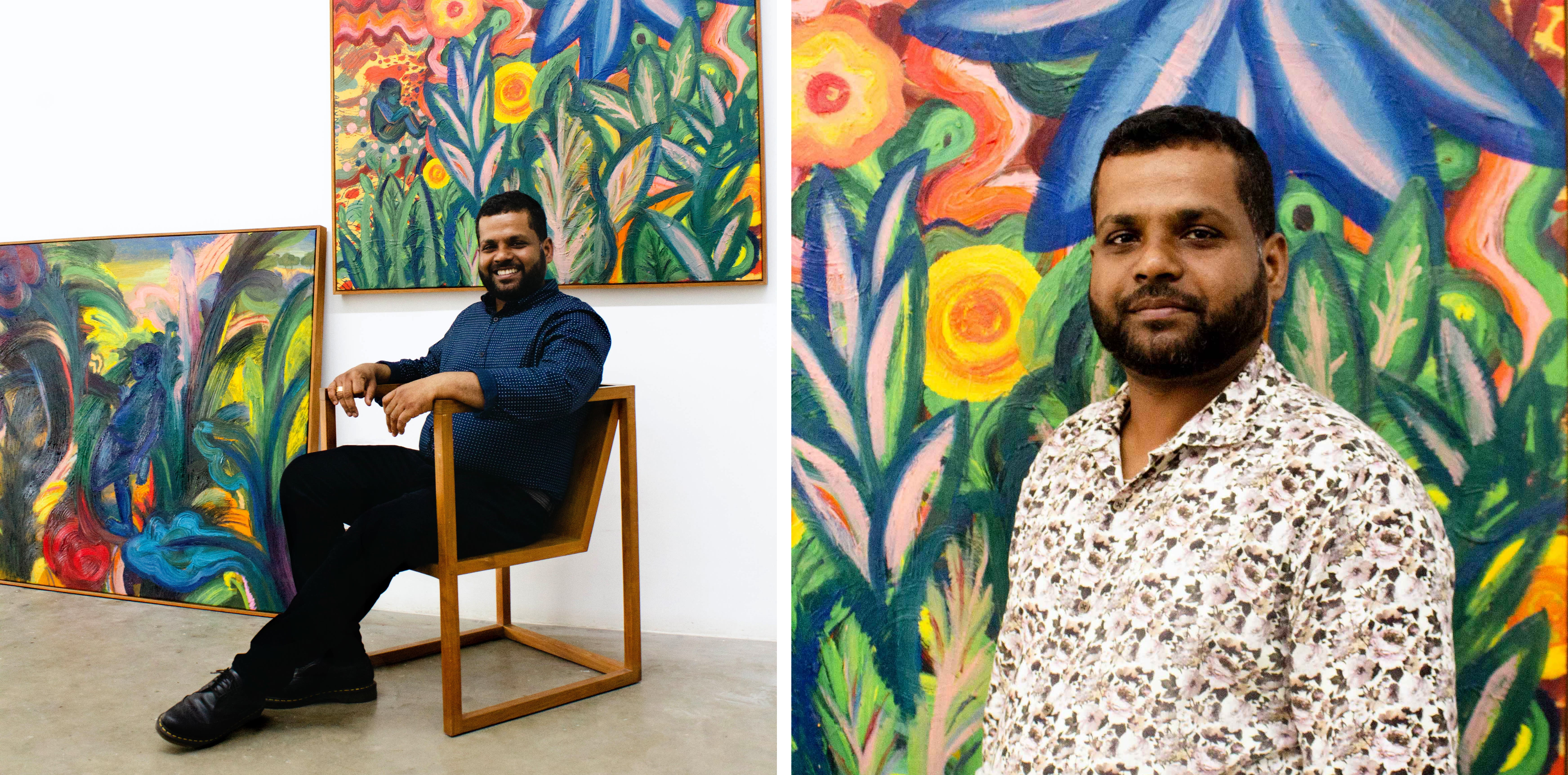 |
| Portrait of Arjuna (2022) |
WHAT IS YOUR TYPICAL DAY LIKE?
It is of course not static. My day revolves around my kids. Once they are home, I usually go to my “Box Room”. It is essentially my studio too. I spend my time there until late in the evening. It is not that I am always drawing. On days when I am not drawing or painting I would be visiting exhibitions, galleries or museums.
How has living in the UK influenced your practice?
I generally don’t speak much except for when it has to do with my work. My interactions with people outside of my family are limited. Otherwise, I am thinking about the society I am living in, the people in it, and I find the need to express what I feel. Hence, I draw. I paint about it.
London is a place where people from all walks of life reside. They come from different cultures too. I also notice their struggles, and their life in London. When I speak to them, I realise that our stories connect. Sometimes I pick one word from the conversations with them, and continue to think about it. I am not necessarily thinking about my life in London, rather I take up from these ideas and draw. I find it poetic.
|
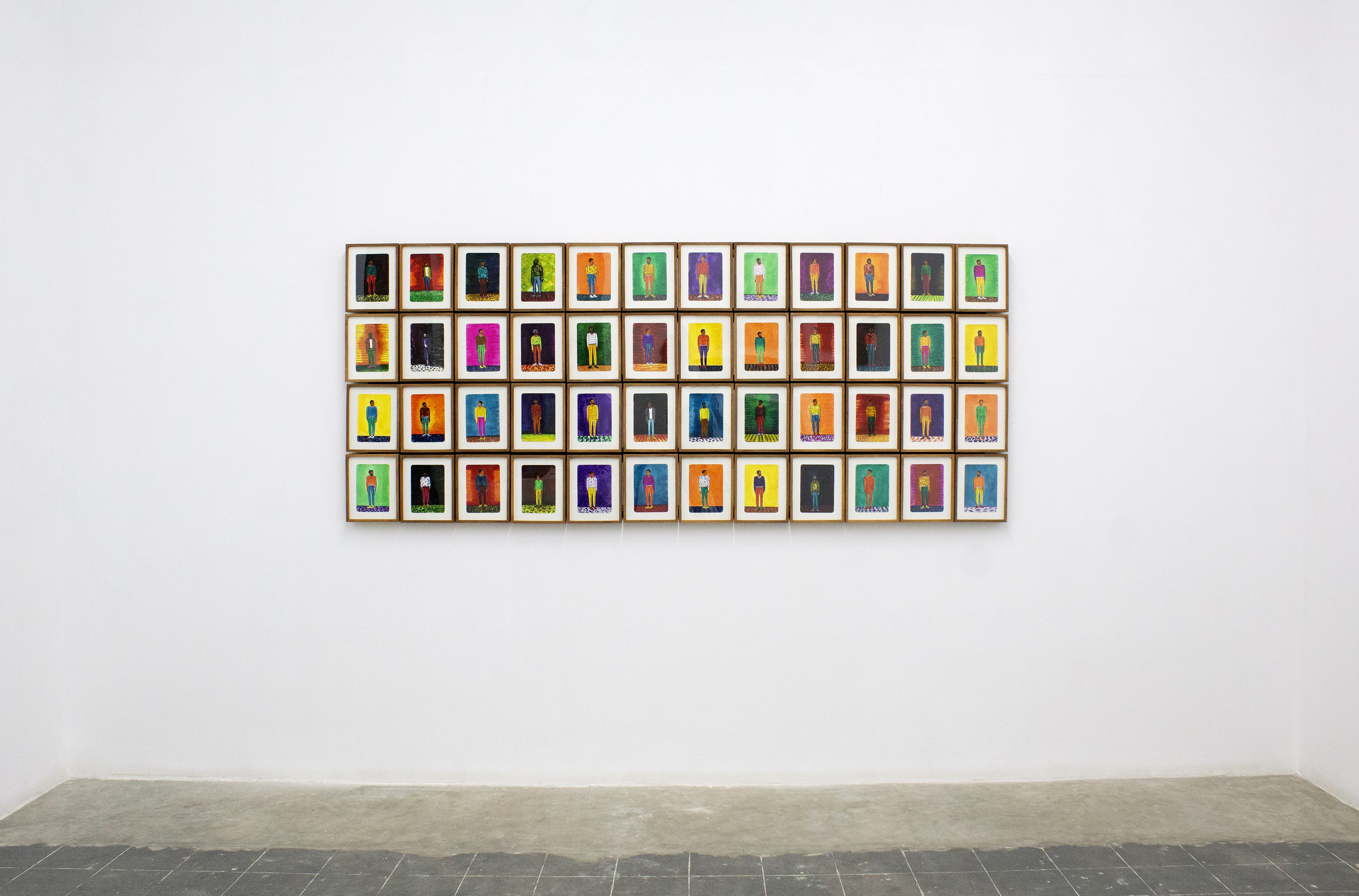 |
| Installation view of Within Boundaries, Saskia Fernando Gallery (2022) |
HOW DO YOU SPEND YOUR TIME IN YOUR STUDIO?
For me painting is a passion. It is an important part of my daily routine. I find it stressful if I haven’t spent time on drawing or painting. When I am in London I always keep a sketchbook. Previously, when I was employed at a full time job I kept a sketchbook with me and I would draw whenever I wasn’t busy with work. However, I don’t think of sketchbooks as the beginning of a painting... I take the subjects for my painting directly from stories instead. If I see something that catches my interest I directly commit to it when I am in the studio— I always draw from what I remember without the support of a sketch or anything. I draw for myself. It is a conversation I have with the canvas. I sometimes might leave a work unfinished and I would return to it after two or three years. This revisitation would be different from my previous exercise. For me what is important is that I am happy with every one of my works. |
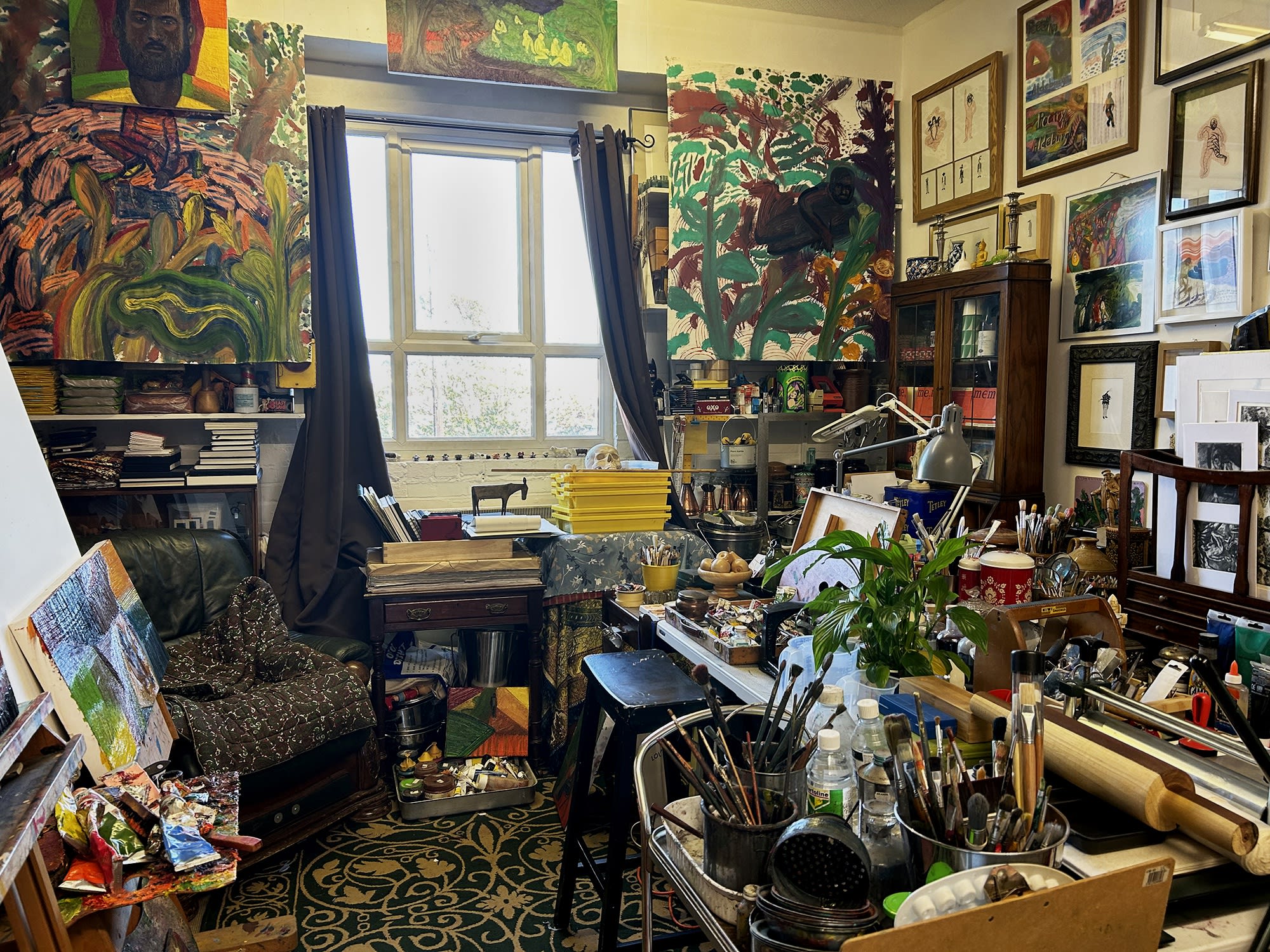 |
 |
| Arjuna's studio (2022) |
|
|
|
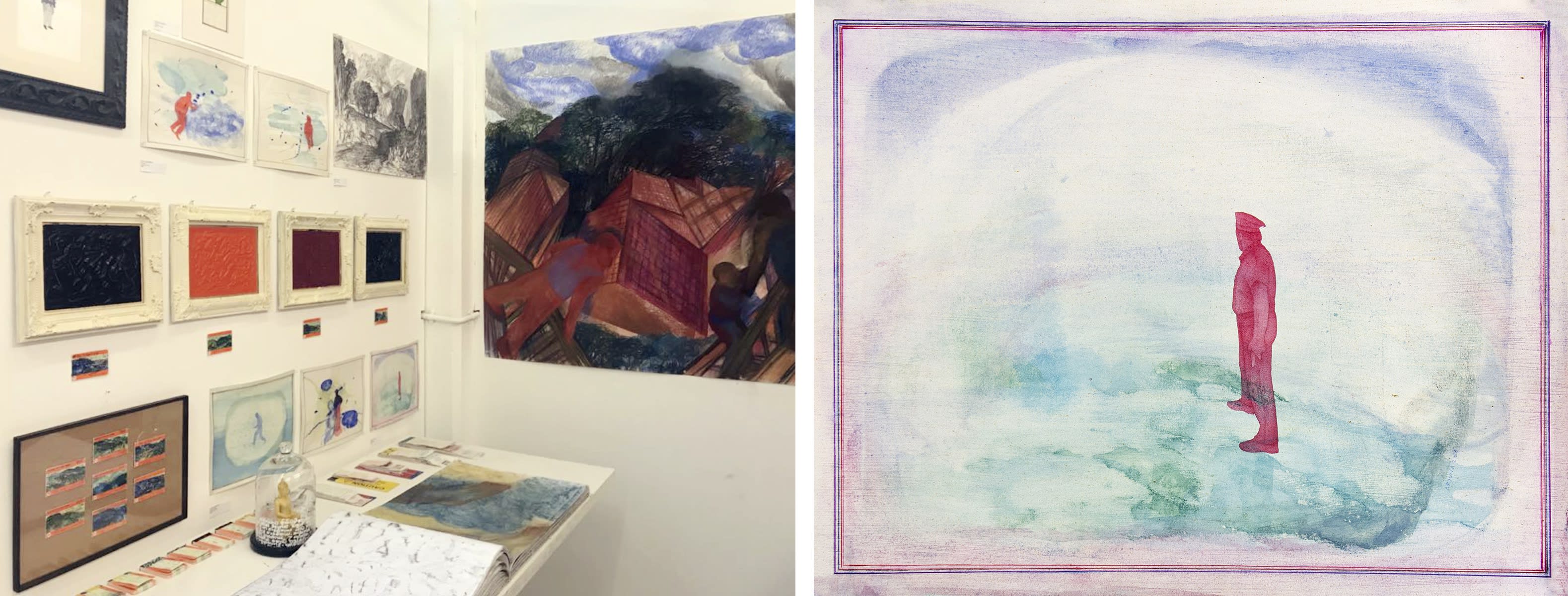 |
|
| Arjuna's Studio at the Royal Drawing School (2018) | |
|
|
|
|
|
|
What and who influences your creative practice?
I think it changes from time to time. There are two people who come to my mind when I think of artists whose works I appreciate, though. One is the English artist William Blake. I find his work to be very alienating and poetic. Then there is Turner whose paintings I actually do not like but I do admire his sketchbooks. I had the opportunity to attend a ten-week session on Turner at the Tate Drawing School which is where I got to see his drawings. He has about 30,000 such works. When viewing his artworks, I get the sense of his presence in them. In my experiments I attempt to amalgamate the sentiments that are usually found in these paintings and the linear approach of western art with the multiple planes of perspective used in miniatures. This method can be seen in some of my canvas works in Within Boundaries. |
|
|
|
|
| Boundaries 1 (2019) + Pitch (2019) | |
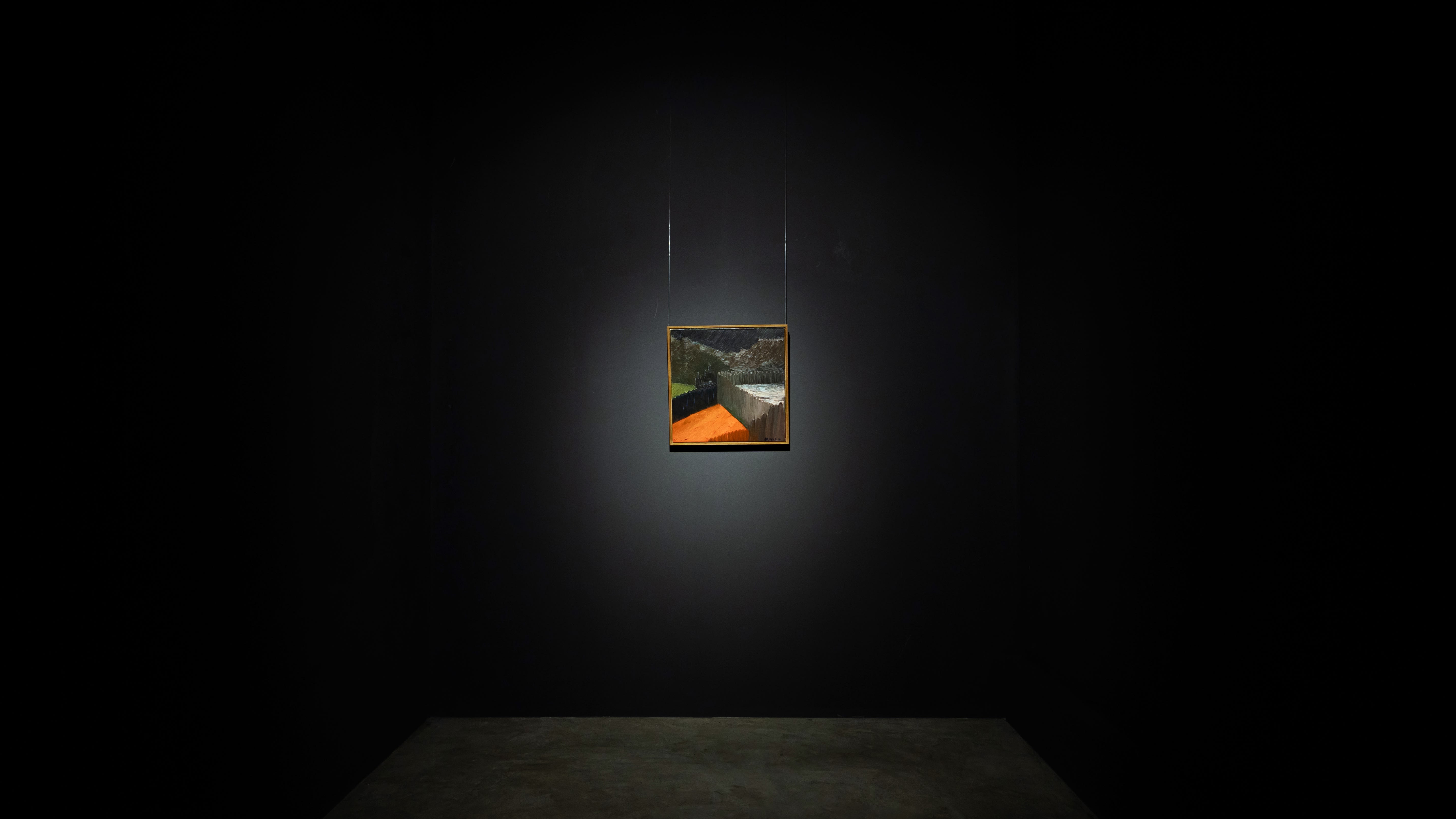 |
|
| Installation view of Within Boundaries, Saskia Fernando Gallery (2022) | |
Can you tell us a little more about your current experiments with your art language? What are the techniques you are working with? Are there very specific ideas that you are trying to explore in your work?
What I think is…an oil painting should be a masterpiece. If you are using a pen to draw then the material qualities of the pen should be visible and any ideas should be reflected in the ink. The different techniques and styles should be visible. I don't paint or draw for the sake of it. I use a medium for six months to 2 years until I learn to master it. For instance, there are sections in a painting that I appreciate more. It is not because I think I can draw or paint that particular section. It is simply because I respond to the technical qualities of those sections such as the thickness of the paint, colours or textures. I strive to achieve the same effect but with my own ideas.
I find that artists from migrant communities currently living in the UK often depict issues pertinent to their home country. I want to address things differently. I want to paint about the struggle of people from Asian countries who are living in London. This approach is what helped my art in being recognized.
Colour appears as an integral part of your work. Could you tell us about how you understand colour?
I think making a painting colourful increases its visibility. Colour enters my art naturally, I think. They are like a puzzle which you cannot easily balance. Sometimes I use many colours to paint but would end up using just two colours. The way in which you use colour can change the meaning of a work.
|
|
 |
|
| Newcome 1 (2022) + Newcomer 2 (2021) |
What are you currently reading?
I usually read art related books. I am currently reading The Story of Art Without Men by Katy Hessel.
Do you like travelling? What is your favourite place to travel to?
I prefer walking more than travelling. I like walking in London. I like going to the outskirts of the city and painting what I see there such as nature, the cityscape, the day and the night.
Do you have any advice for aspiring young artists?
I would recommend that they maintain sketch books as much as possible. Another thing I would suggest is that they engage with the history of art practically. Instead of trying to understand it through text or reading the many opinions presented in scores of books, I would suggest they visit museums and exhibitions. You learn better when you notice certain specific details in an artwork. |
|
|
 |
| Day at the Park 1 (2019) |

